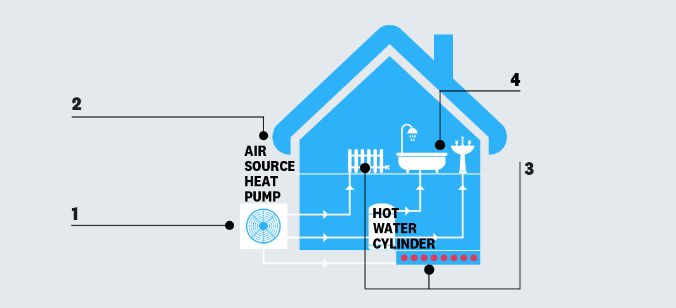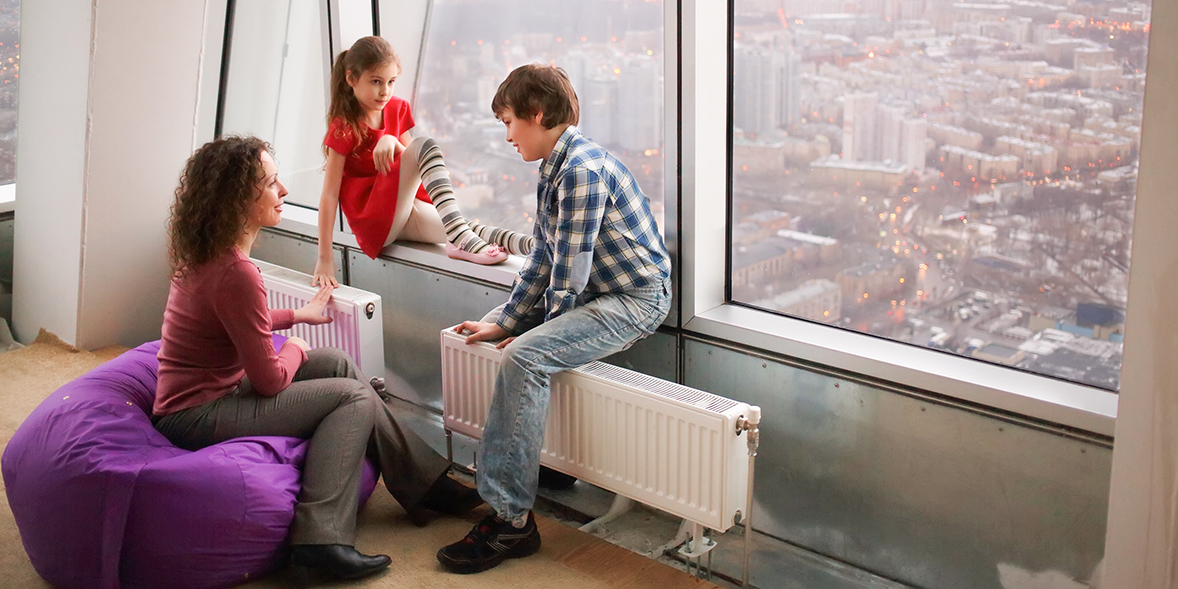Air source heat pumps explained

An air source pump is an alternative way to heat your home. It will enable you to generate your own renewable heat and potentially save you money on your energy bills in the long run.
They deliver heat at lower temperatures than gas and oil boilers. So you'll need to run them for much longer periods to heat your home to a comfortable temperature.
A well-insulated home is essential – otherwise the heat the pump generates escapes more easily and you may find the temperature doesn't get up to a level you're used to.
Heat pumps will save you more on your heating bills if you're replacing an expensive system such as electric storage heaters, oil, LPG (liquefied petroleum gas) or coal. If you're replacing a gas boiler you won't see as big a cost saving - though you will stiil be considerably lowering your carbon emissions.
Other options to generate your own energy include:
Read on to find out more about the pros and cons of air source heat pumps, so you can decide whether getting one is the right decision for you.
How does an air source heat pump work?
An air source heat pump takes heat from the air and boosts it to a higher temperature using a compressor. It then transfers the heat to the heating system in your home.
They work a bit like refrigerators in reverse.

- The air source heat pump absorbs heat from the outside air into a liquid refrigerant at a low temperature.
- Using electricity, the pump compresses the liquid to increase its temperature. It then condenses back into a liquid to release its stored heat.
- Heat is sent to your radiators or underfloor heating. The remainder can be stored in your hot water cylinder.
- You can use your stored hot water for showers, baths and taps.
The pump uses electricity to run, but it should use less electrical energy than the heat it produces. This makes them an energy-efficient way to warm your home.
Air source heat pumps work even if the temperature is well below zero.
Ground source heat pumps also harness natural heat and increase the temperature to warm your home. Find out how ground source heat pumps work.
What is an air source heat pump?
An air source heat pump is a low-carbon way of heating your home. They absorb latent heat from the outside air and use it to increase the temperature inside your home.
Air source heat pumps look similar to air-conditioning units. Their size depends on how much heat they'll need to generate for your home - the more heat, the bigger the heat pump.
There are two main types of air source heat pumps: air-to-water and air-to-air. They work in different ways and are compatible with different types of heating systems.
Air-to-water heat pumps
Air-to-water heat pumps take heat from the outside air and feed it into your wet central heating system.
They're most suitable for larger radiators or water underfloor heating because the heat they produce is cooler than that from a conventional gas or oil boiler. To be most effective they need a large surface area to release the heat.
It is more straightforward to incorporate larger radiators or underfloor heating for a heat pump while you're extending your home or in a new-build property. It can also cost less than retrofitting underfloor heating later on.

Air-to-air heat pumps
Air-to-air heat pumps take heat from the outside air and feed it into your home through fans. You need a warm air circulation system to move the heat around your home.
These systems cannot produce hot water so you'll need a separate immersion heater or other water heating system.
In the summer, an air-to-air heat pump can operate in reverse. In other words, you can use it like an air-conditioning unit to provide cool air for your home.
If you're looking for an air conditioner, check our air conditioner reviews.
Air source heat pump installation

Air source heat pumps are usually positioned outdoors at the side or back of a property. They need plenty of space around them for air to circulate.
Inside, you'll usually have a unit containing pumps and hot water.
They are less disruptive to install than ground source heat pumps, as they do not require any digging in your garden.
You won't normally need planning permission for an air source heat pump, but if you live in a listed building or conservation area, then you'll usually need the consent of your local authority. You'll also need to check that your installation will meet the building regulations in your area.
Speak to your home insurance provider too to check if your policy will cover the changes to your heating system.
If you're getting an air source heat pump it's important to make sure that your home is well-insulated so that is can retain the heat. Underfloor heating or larger radiators are often installed alongside heat pumps to disperse the heat better.
Your installer should tell you how to use the controls for your heat pump to help you use it most effectively. You will probably need to heat your home for more hours but at a lower temperature.
When your system is completed, you should get a Commissioning Certificate from the installer. You should also get a Microgeneration Certification Scheme (MCS) installation certificate once the system has been registered (the installer must do this within 10 days). You'll need this to qualify for most funding schemes.
Air source heat pump advantages and disadvantages

Air source heat pumps require little maintenance and can provide heating and hot water, but they aren't flawless systems. Here are some of the key advantages and disadvantages:
Pros
- Energy efficient and low carbon - air source heat pumps generate less CO2 than many conventional heating systems
- Less disruptive than installing a ground source heat pump, especially if you're retrofitting
- You could save money on heating compared with some older systems.
Cons
- You'll need enough space in your garden for the external condenser unit
- Condenser units can be noisy and blow colder air into the area immediately around them
- Electricity is needed to drive the pump so they're not zero-carbon (unless the electricity comes from a renewable source such as solar panels or a wind turbine).
Are air source heat pumps efficient?
An air source heat pump system can help to lower your carbon footprint as it uses a renewable, natural source of heat – air. How much CO2 you'll save depends on the fuel you are replacing. For example, the figure will be higher if you are replacing coal or an oil boiler rather than natural gas.
A heat pump needs a power source, usually electricity, to power the heat pump, so there will still be some resulting CO2 emissions.
To get the best from your heat pump, you'll need to know how to use it most effectively. Often you'll need to set your heating to come on for longer than with a traditional system. Your installer should show you how to control your heat pump system.
You should also have your heat pump serviced every two to three years. Check that any grills are free of leaves and debris on a regular basis and follow any other maintenance checks advised by your installer.
Heat pump energy labels
Heat pumps must have an energy label on them. It states how energy efficient the pump is on a scale from dark green (most efficient) to red (least efficient).
Since 26 September 2015, all new heat pumps must be sold with an EU product label. The installer should also produce a package label that displays the efficiency based on several different components in the heating system.
All heat pumps certified by the MCS must be sold with a product label, and the installer must produce a package label.
Read more: tips on saving electricity and money